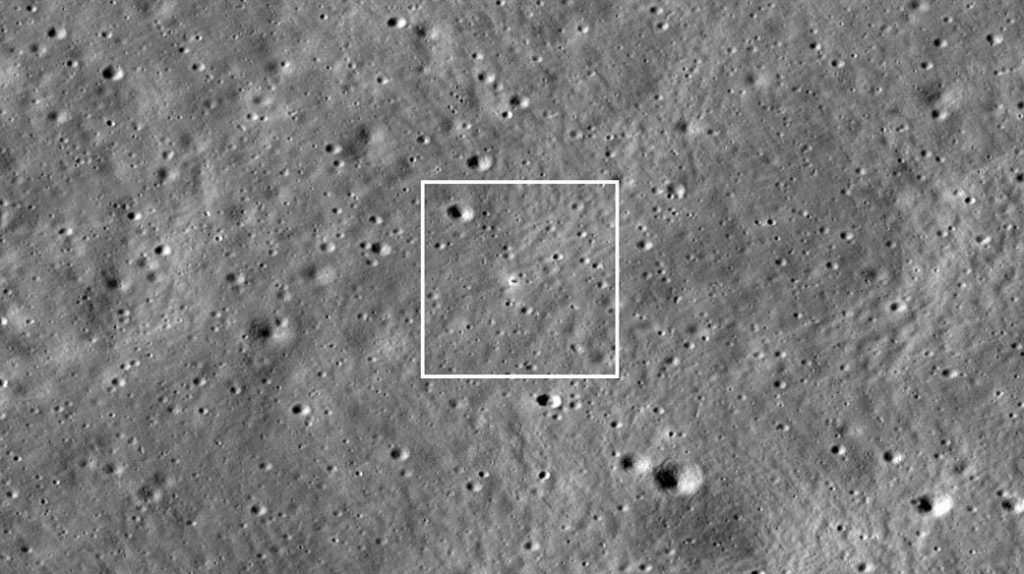India’s historic Chandrayaan-3 mission has already had a huge impact back on Earth. The world celebrated as India became only the fourth nation to successfully soft-land on our lunar neighbor. Even better, the Vikram lander touched down in the unexplored and scientifically intriguing south pole region. An orbiting NASA spacecraft captured a fascinating top-down view of the scene.
Even a gentle moon landing leaves a mark. The Chandrayaan-3 lander touched down on August 23. NASA’s Lunar Reconnaissance Orbiter passed over the landing site four days later and snapped a distant view with its LRO Camera. NASA released the image on Monday. The lander looks tiny in comparison to the moon’s pockmarked landscape, but the mission’s mark is visible even from LRO’s position up in orbit.
NASA handily marked the landing site with a white square. Look in the center to spot Vikram represented by a dark blotch of shadow surrounded by lighter material. “The bright halo around the vehicle resulted from the rocket plume interacting with the fine-grained regolith (soil),” NASA said in a statement. Essentially, Vikram kicked up a lot of dust as it came in for the landing.
Chandrayaan-3’s first mission objective was to demonstrate a safe and soft landing on the lunar surface. That may seem like an obvious goal, but it’s hard to achieve. The Indian Space Research Organization’s predecessor mission Chandrayaan-2 crashed in 2019 while attempting to land. LRO witnessed the aftermath of that crash and captured a view of the debris field. Notations show the main impact site and the scattering of debris in the area. It makes for a stark contrast to the new image of the intact Chandrayaan-3 lander.
Images from both the surface and above provide different levels of perspective on the mission. LRO places the lander in context with the wider surface area, but we’ve also been treated to a view from ground level. The lander delivered a rover named Pragyan onto the surface. The small vehicle snapped a lovely look at its ride on August 30. It shows the lander casting a shadow over the surface.
The lander isn’t exactly on the south pole, but it’s in the area. Scientists are particularly excited about this region because it’s expected to harbor water deposits, a resource that could be used to help sustain a human presence on the moon. It’s not just for quenching astronauts’ thirst. Water can be used to manufacture oxygen and rocket fuel. Water is a big reason why NASA has its eyes on the south pole as a human landing site for its Artemis program. Chandrayaan-3 is giving scientists eyes on the ground at an important time for moon exploration efforts.
ISRO has put both Vikram and Pragyan into sleep mode, a sort of suspended animation for the robotic explorers. The mission was originally designed to last for a lunar day, which works out to two Earth weeks. ISRO hopes the solar-powered mission will survive the long lunar night and possibly reawaken around September 22. It will be a waiting game. Even if the explorers don’t come back to life, they already accomplished their mission goals, starting with the all-important safe landing.
Read the full article here










